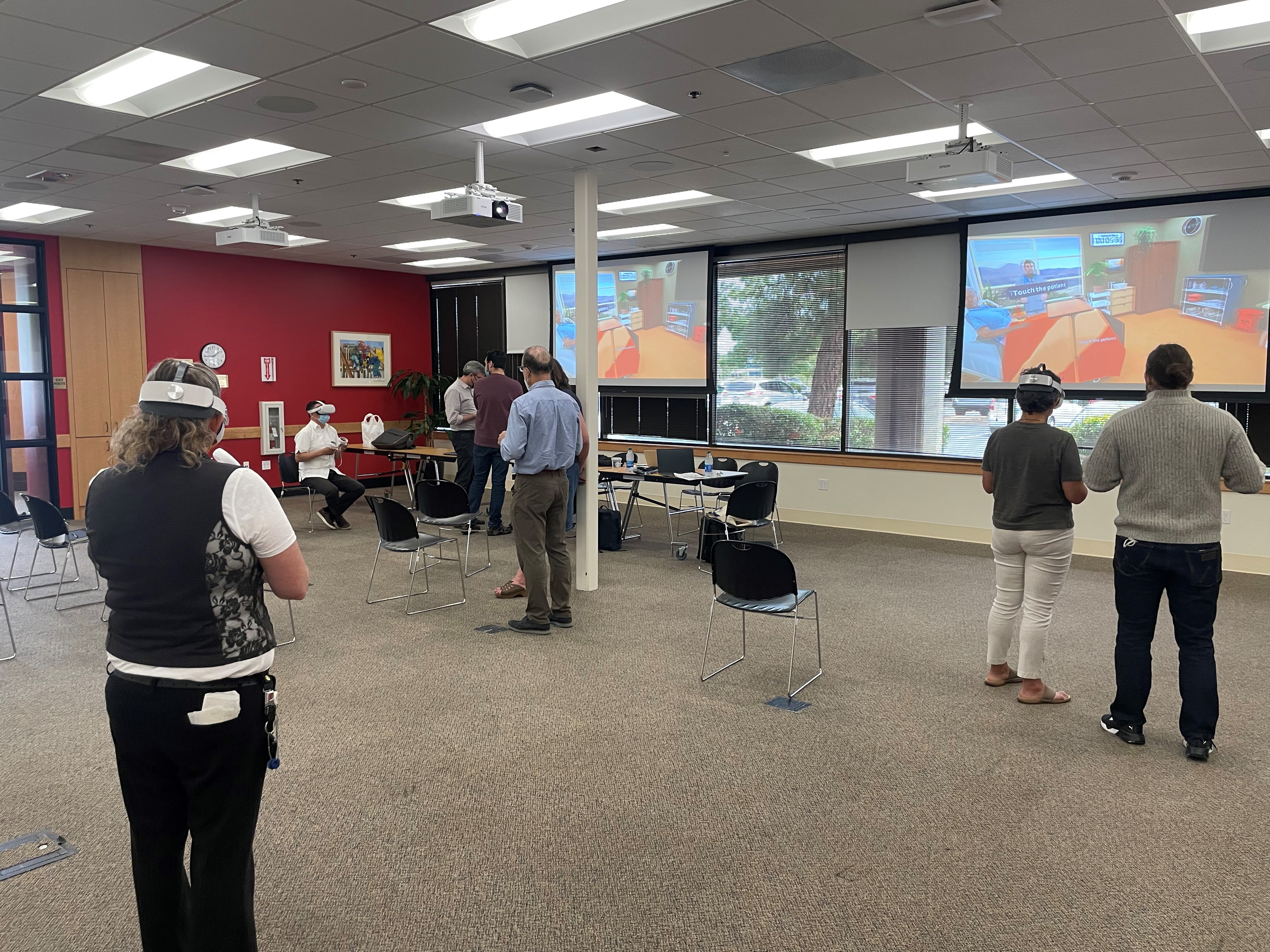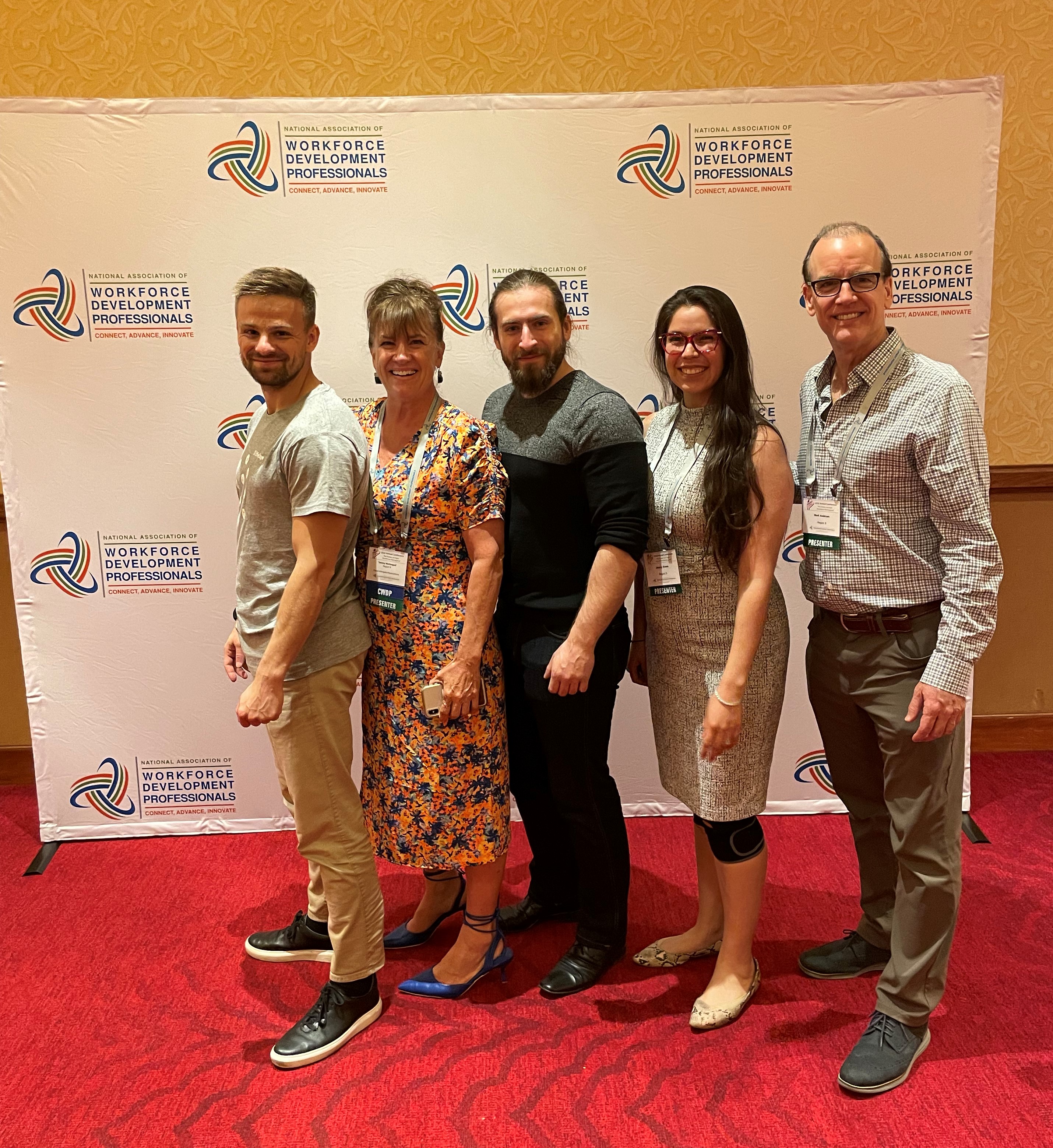We're back from our U.S. tour. Here's our summary
We’re back from an incredible tour across the US. We joined a number of events focusing on the workforce development innovation and while some of our colleagues are still on the road, we took some time to reflect on our recent experiences. Read on, more to come.
"Immersive experiences are enabling patrons and potential job applicants to explore the key job tasks, tools, work environments, common struggles, and high-risk practices, but also required skills and competencies."
NAWDP (National Association of Workforce Development Professionals) 2022, Las Vegas, California
May 16th to 18th
Innovation in virtual and hybrid environments was one of the major topics of the annual conference of National Association of Workforce Development Professionals. Mark Andersen, CEO and co-founder of Lifeliqe joined Tammy Westergard, the coordinator of SANDI, the project managed by the Nevada’s Governors Office of Economic Development (GOED) in a presentation called “Career Navigation and Workforce Training in Virtual Reality: How Libraries are Leading the Way Digitally in 3D”. Tammy and Mark showed how libraries support the career navigation of dislocated individuals with help of virtual reality.
Today projects that some librarians called a science-fiction a few years ago are being implemented in states like Nevada, where Government Office for Economical Development deployed a program called SANDI. The project which stands for “Supporting and Advancing Nevada's Dislocated Individuals” is transforming the role of libraries in the 21st century.
Career navigation is the important first step of workforce development as it precedes the actual job training and certificate acquisition. Virtual reality is now part of this process. Immersive experiences are enabling patrons and potential job applicants to explore the key job tasks, tools, work environments, common struggles, and high-risk practices, but also required skills and competencies. It also sparks a passion for new careers as well as lifelong learning opportunities.
We were excited to join all the conversations about how the Project SANDI can be scaled across the US to support individuals in finding new careers.

"The new challenges of the job market cannot be tackled if institutions such as libraries, labor offices, and other state workforce development bodies, community colleges, CTE Pathways programs, private training operators, and software vendors like us don’t work together."
Nevada Tour for the Project SANDI
May 18 to 24th
We visited a number of cities in Nevada to meet with partners in Project SANDI as well the content guarantors for our upcoming VR simulations - MT1 (Manufacturing Technician 1) for smart manufacturing, CNA (Certified Nursing Assistant), and Computational thinking/Spatial Reasoning.
During all these visits, we learned about the huge momentum the SANDI is gaining. We visited the libraries in Las Vegas Clark County Library District in order to help onboard librarians with the newest updates in the project SANDI.
And again, we saw how important libraries are in their mission to serve as community hubs connecting people and providing resources and information. As Mark and Tammy presented at NAWDP, they also help patrons access the new careers.
For this purpose, Nevadan libraries established the one-stop centers that provide information about the new career opportunities, and also enable experiencing what it’s like to work in the key industries - thanks to virtual reality. That’s how one-stop centers help patrons gain motivation to continue learning new work-related skills. And to continue further - for example, by enrolling in training courses at Community Colleges or private operators to access the new career opportunities.
All these institutions are taking their part of the “Community of Practice”. This is a partnership of various stakeholders in the workforce development programs in Nevada. They all take their part in the Project SANDI. Its mission is to help the state prepare for automation and other challenges and opportunities that today’s economies are facing. In order to do so, the “extreme cooperation” of all these institutions is crucial. This term was coined by Karsten Heise and Tammy Westergard from Nevada’s GOED, and indeed, we love the idea. The new challenges of the job market cannot be tackled if institutions such as libraries, labor offices, and other state workforce development bodies, community colleges, CTE Pathways programs, private training operators, and software vendors like us don’t work together.

"The improved sense of presence and agency, even in remote training, is one of the key benefits that make virtual reality an effective learning tool in industries such as healthcare."
ANNA (American Nephrology Nurse Association) Annual Symposium 2022, Fort Worth, Texas
May 22nd to 24th
While libraries are becoming an on-ramp institution to gain lifelong learning and career opportunities, healthcare is the strategic industry where a new advanced workforce is needed. That’s why it’s one of the priority industries we chose with Lifeliqe.
We joined the nephrology professionals’ conference to show how virtual simulation can help with the training of future technicians at dialysis clinics as well as other healthcare careers. And we were indeed happy to see that virtual reality content is being recognized and used across the healthcare industry, including nephrology. Why?
Immersive virtual reality is the ideal solution for the efficient learning of students being introduced to their new careers. They need to quickly acquire new knowledge in a rather short time. The improved sense of presence and agency, even in remote training, is one of the key benefits that make virtual reality an effective learning tool in industries such as healthcare.
Tim Dillon, Lifeliqe Sales Representative, demonstrated how this works in practice with Lifeliqe Dialysis Technician VR simulation. Check this article at Healio.com with a video of his demo.

"Workers need to upskill and reskill very quickly and cannot afford to spend years studying to be job-ready. One of the key solutions is the non-degree credentials that can be obtained in weeks or months, not years."
Bay Area Tour
May 24th to 30th
Back in the Bay Area! The fast-shifting job market is shaping the way people adapt to new challenges in the job market. Many times, workers need to upskill and reskill very quickly and cannot afford to spend years studying to be job-ready. One of the key solutions is the non-degree credentials that can be obtained in weeks or months, not years.
In order to explore how the career technical education (CTE) pathways and community colleges can provide training for non-degree certifications in virtual reality, more efficiently, and even remotely, we visited San Mateo County Office of Education and the Bay Area Community College Consortium and Workforce Investment Board (WIB) of Santa Clara County to explore the opportunities and challenges of this approach.
All our VR training simulations are aligned to these credentials to help individuals re-skill and up-skill quickly in order to get a meaningful job. We were happy to get re-assured that we chose the right path. And we’re excited to work further to introduce more immersive simulations and career navigation field trips later this year.
Even though the proposed Biden’s administration budget for the fiscal year 2023 didn’t finally include the originally-proposed free community college, it would at least increase Pell Grant funding in order to advance the support for low-income students. Mordecai I. Brownlee, the president of Community College of Aurora in Aurora, has written a well-crafted summary of the importance of community colleges for today’s shifting economy, and why they should be supported by the federal government.
In addition to that, COVID-19 legislation passed has provided increased funding to K-12 education, including the March 2020 CARES Act, the December 2020 COVID Relief Package, and the March 2021 American Rescue Plan. Approximately 80% of the combined $190 billion in K-12 education funding allocated by these programs has not yet been spent which can be a big opportunity for the CTE Pathways programs.
Here's a photo with Tammy Westergard, the aforementioned Project SANDI coordinator, a co-presenter at NAWDP and a big inspiration in the world of libraries and workforce development. (second on the left).
That's it for today! There’s obviously a lot to share. We’ll get back soon with our summary and insights from more events our team members are just visiting, including CLA (California Library Association) conference and ALA (American Library Association) conference.
Authors
Matous Tlapák, COO
Michal Mizerák, Workforce development lead & project manager